HTC One max Review - It's Huge
by Brian Klug on October 28, 2013 10:00 AM EST- Posted in
- Smartphones
- HTC
- Mobile
- One
- Snapdragon 600
- Android 4.3
- One max
The performance section is probably a good place to talk about one of the elephants in the room, and that’s the SoC inside the One max. The One max includes a Snapdragon 600 APQ8064T SoC, which consists of 4 Krait 300 cores running at up to 1.7 GHz, and Adreno 320 GPU, all built on TSMC’s 28nm LP process. This is the same SoC that shipped in the original HTC One, and the same 1.7 GHz bin as well. There have been three major variants or families of APQ8064(T) to date. There first was the option for the earliest 1.5 GHz Snapdragon S4 Pro version (AA suffix), the 1.7 GHz “8064T/Pro” variant in the HTC One and One max (AB suffix) which began the Snapdragon 600 branding, and finally the 1.9 GHz CPU and 450 MHz GPU variant we first saw in the SGS4 (AC suffix). Qualcomm usually has a number of revisions of its silicon, and with APQ8064 we saw quite a few. As an aside, expect similar with 8974 or Snapdragon 800.
There’s nothing wrong with the 1.7 GHz Snapdragon 600 variant, it was and still is a great performer, but the reality is that HTC falls behind on its hardware platform with the One max by not going to Snapdragon 800 (MSM8974) like the rest of the competition (Note 3, ASUS Padfone Infinity 2014, LG G2, Nexus 5, and so on). So much of the SoC performance and power story right now is gated by process, and 8974 moves to TSMC’s high-k metal gate 28nm HPM process which affords some clock headroom (up to 2.3 GHz) and lower power consumption at lower performance states for Krait 400 (which is essentially 300 implemented on that new process). 8974 also brings a beefier Adreno 330 GPU with more ALUs and higher clocks, in addition to the new modem IP block, but I won’t go over all of that.
It’s pretty obvious to me that the One max stays with the same SoC used in the original One for a few reasons which ultimately boil down to cost and margin. It obviously means HTC can share the same SoC between the One and One max, and since it’s later in APQ8064’s lifespan I would suspect HTC was able to secure good pricing for it. Having closer shared hardware platform means about the same software stack on top of it, and the same source tree from Qualcomm (BSP) for building and testing ROMs. This makes the software maintenance and update costs lower for the One max. I won’t speculate too much beyond that, but I wouldn’t be surprised if the One max started out an 8974 device but later became an 8064 device, given its timing.
| I Can't Believe I Have to Regularly Update This Table | |||||||||||
| Device | SoC | Cheats In | |||||||||
| 3DM | AnTuTu | AndEBench | Basemark X | Geekbench 3 | GFXB 2.7 | Vellamo | |||||
| ASUS Padfone Infinity | Qualcomm Snapdragon 800 | N | Y | N | N | N | N | Y | |||
| HTC One | Qualcomm Snapdragon 600 | Y | Y | N | N | N | Y | Y | |||
| HTC One mini | Qualcomm Snapdragon 400 | Y | Y | N | N | N | Y | Y | |||
| HTC One max | Qualcomm Snapdragon 600 | Y | Y | N | N | N | Y | Y | |||
| LG G2 | Qualcomm Snapdragon 800 | N | Y | N | N | N | N | Y | |||
| Moto RAZR i | Intel Atom Z2460 | N | N | N | N | N | N | N | |||
| Moto X | Qualcomm Snapdragon S4 Pro | N | N | N | N | N | N | N | |||
| Nexus 4 | Qualcomm APQ8064 | N | N | N | N | N | N | N | |||
| Nexus 7 | Qualcomm Snapdragon 600 | N | N | N | N | N | N | N | |||
| Samsung Galaxy S 4 | Qualcomm Snapdragon 600 | N | Y | Y | N | N | N | Y | |||
| Samsung Galaxy Note 3 | Qualcomm Snapdragon 800 | Y | Y | Y | Y | Y | N | Y | |||
| Samsung Galaxy Tab 3 10.1 | Intel Atom Z2560 | N | Y | Y | N | N | N | N | |||
| Samsung Galaxy Note 10.1 (2014 Edition) | Samsung Exynos 5420 | Y(1.4) | Y(1.4) | Y(1.4) | Y(1.4) | Y(1.4) | N | Y(1.9) | |||
| NVIDIA Shield | Tegra 4 | N | N | N | N | N | N | N | |||
The HTC One max, like a ton of other devices, continues to employ a CPU optimization “boost” feature which plugs in all the CPU cores and increases clocks to their maximum upon detection of certain benchmarks. It’s sad that this needs to be a regular disclosure for each handset release, since the narrative will likely be the same for the near future, but yes the One max does this.
Given product development cycles and how long it takes software in the Android landscape to make it through the chain from internal OEM testing to operator test approval and finally hitting devices, I expect we’ll see a pipeline of devices with this “feature” enabled for a while before it changes, even if we could change every OEM’s mind about it right now. I’m starting to understand more about the origin of these optimizations, the list of APKs they detect and boost for, and what party is ultimately responsible, but that’s a story for another day.
CPU
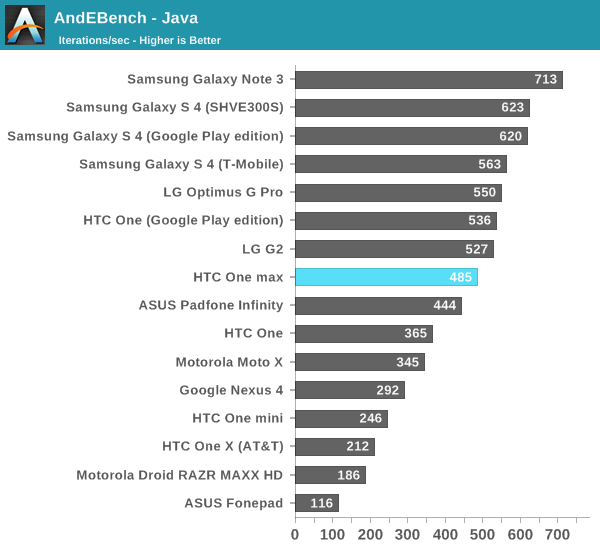
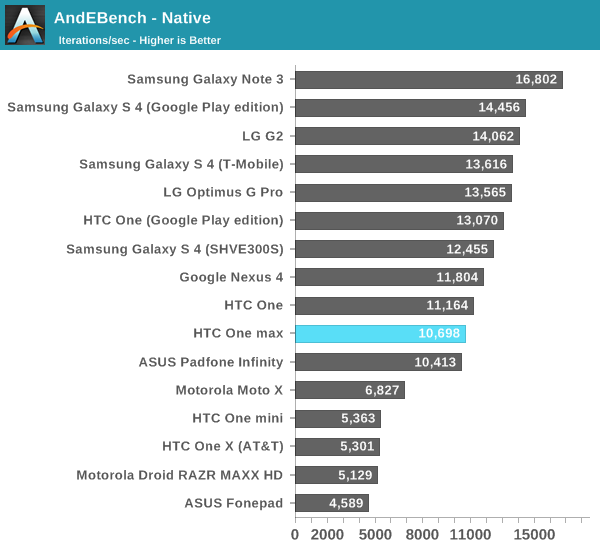
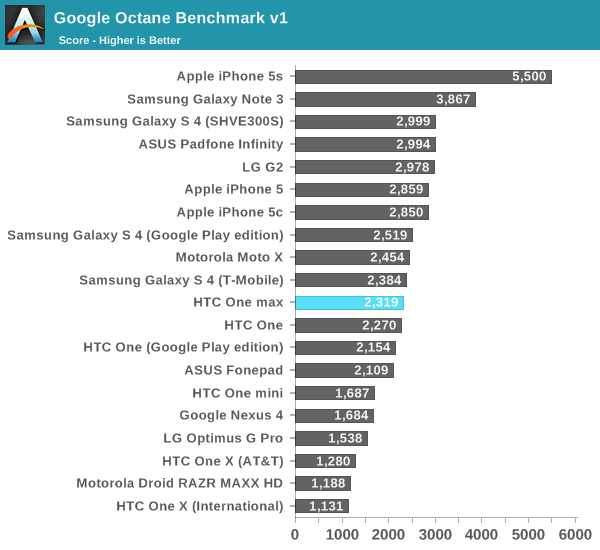
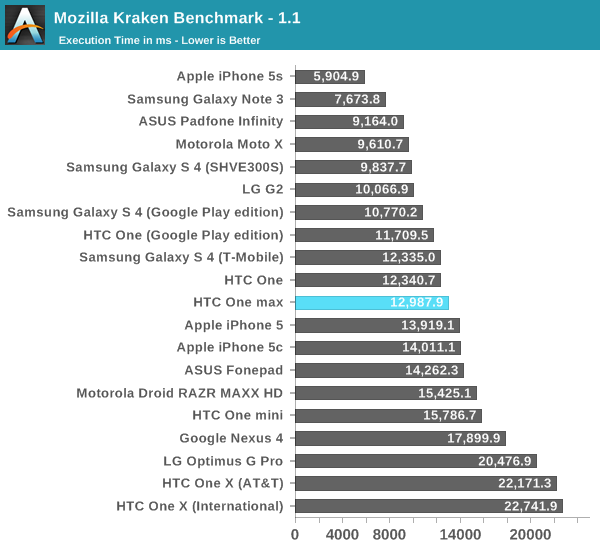
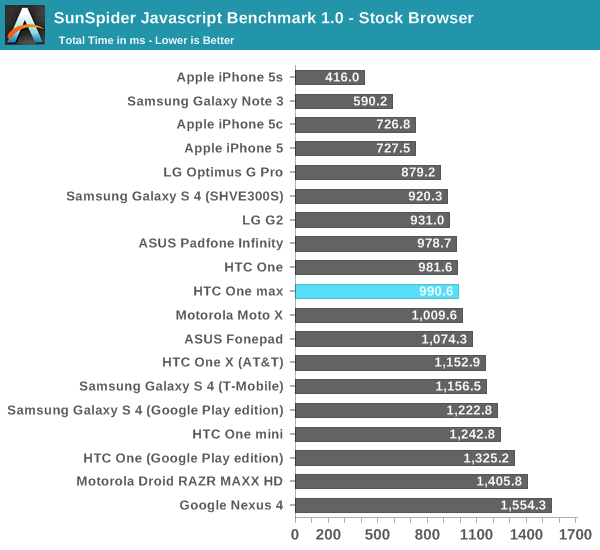
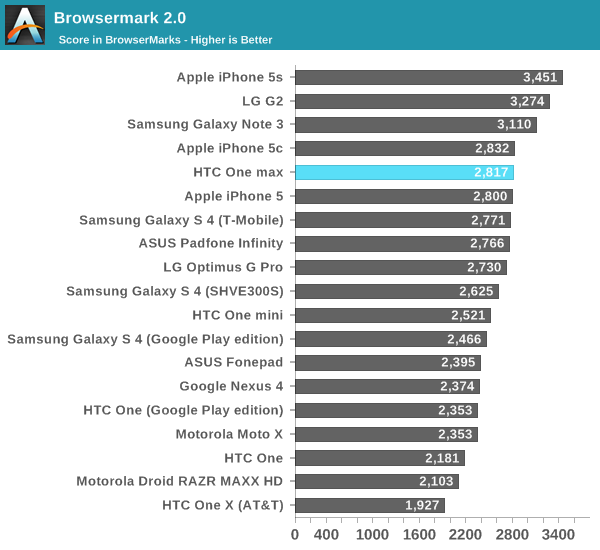
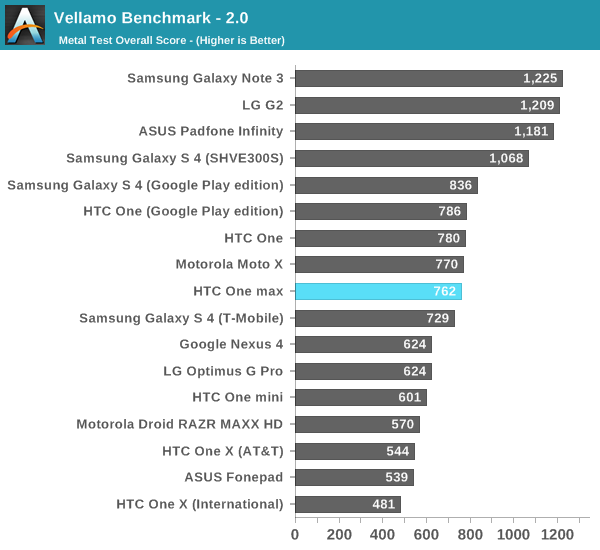
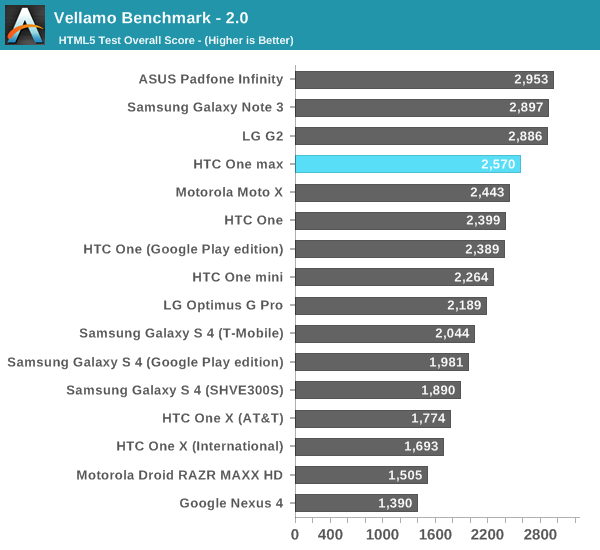
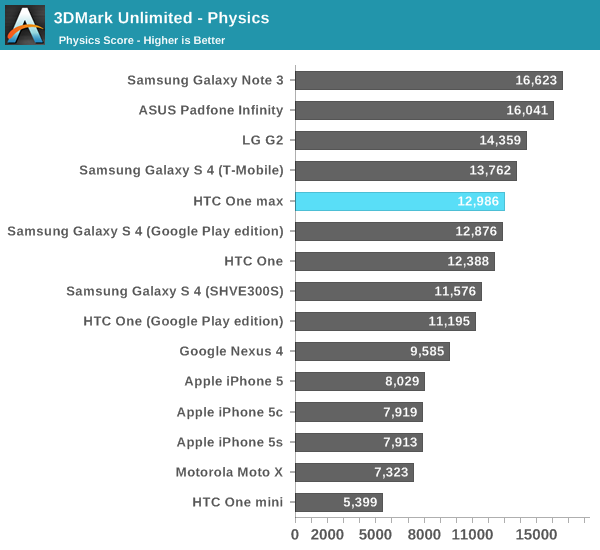
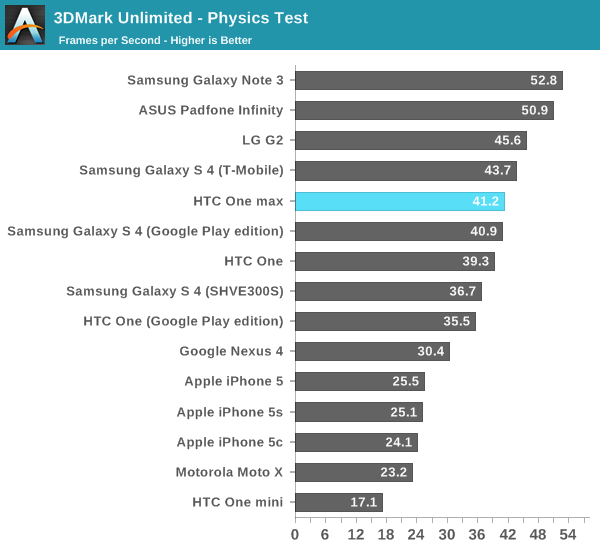
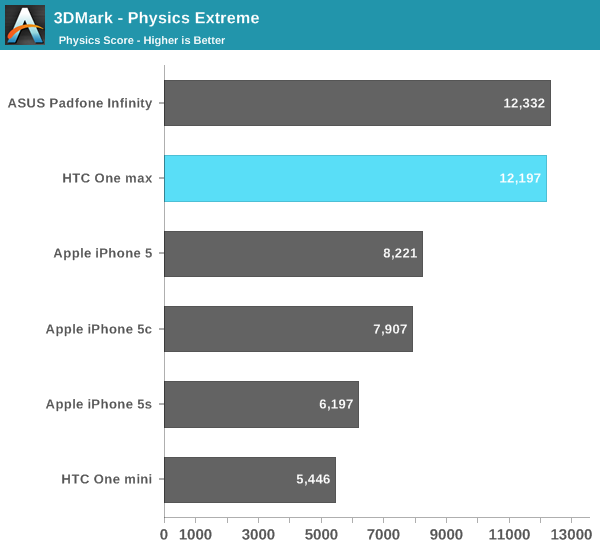
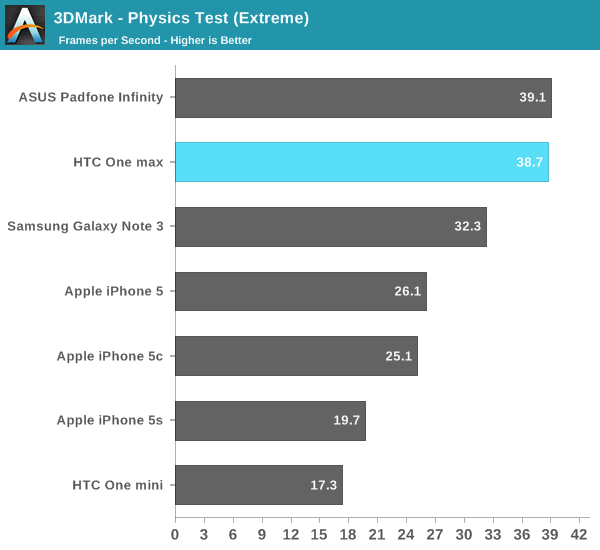
GPU
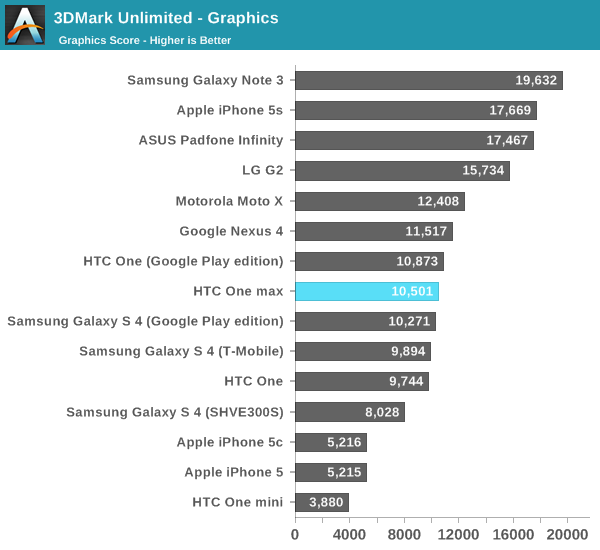
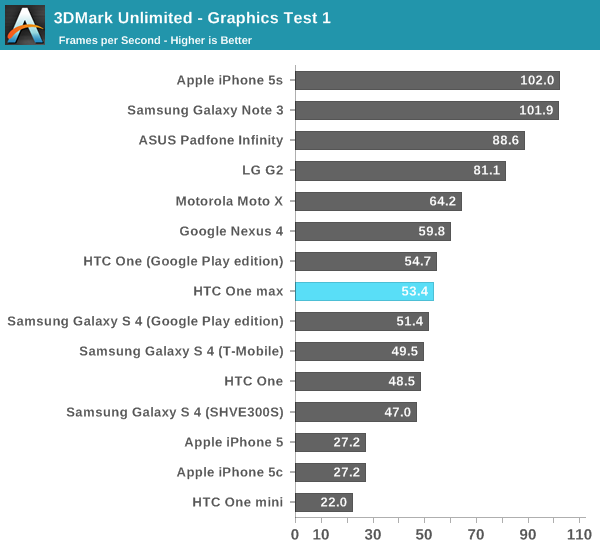
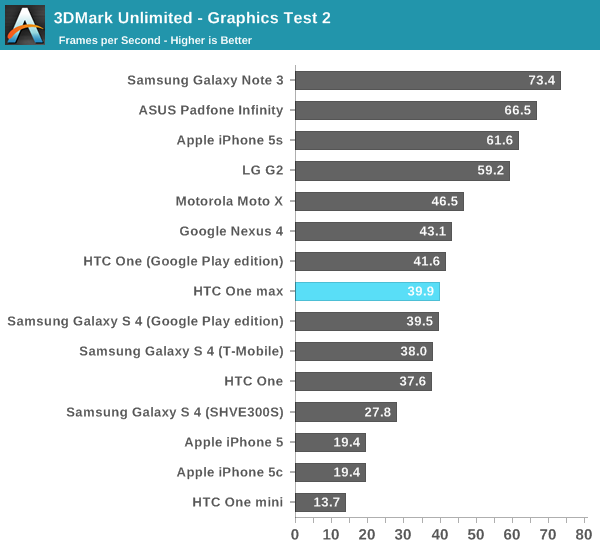
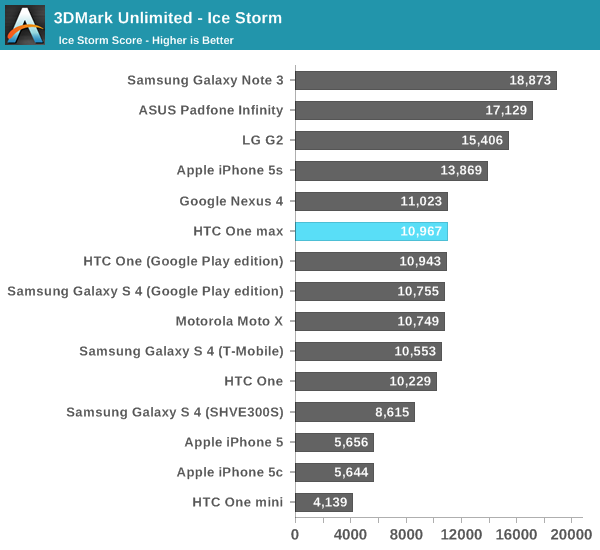
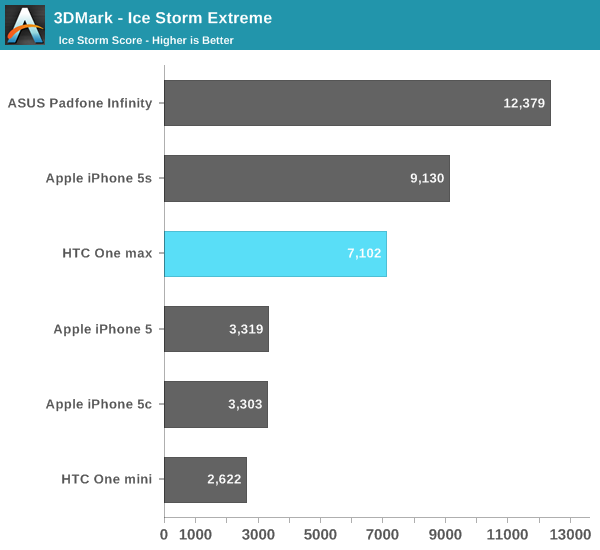
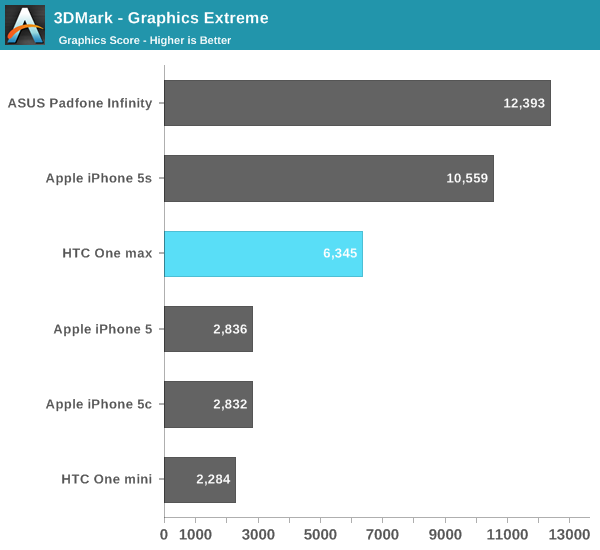
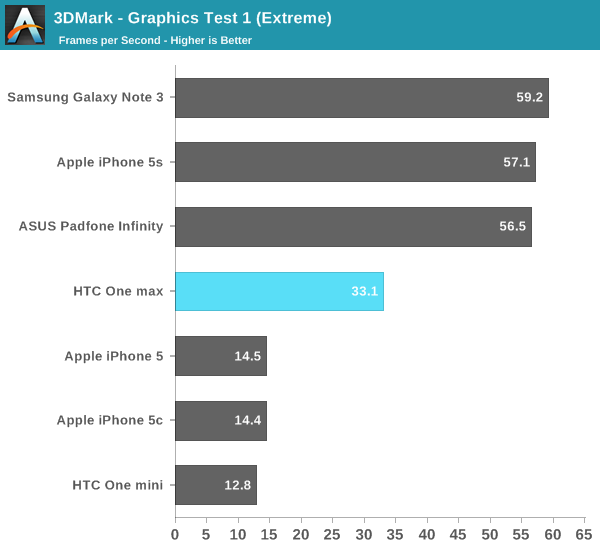
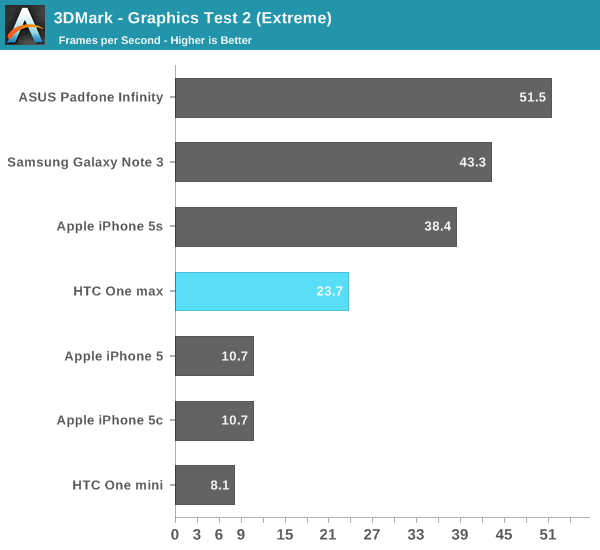
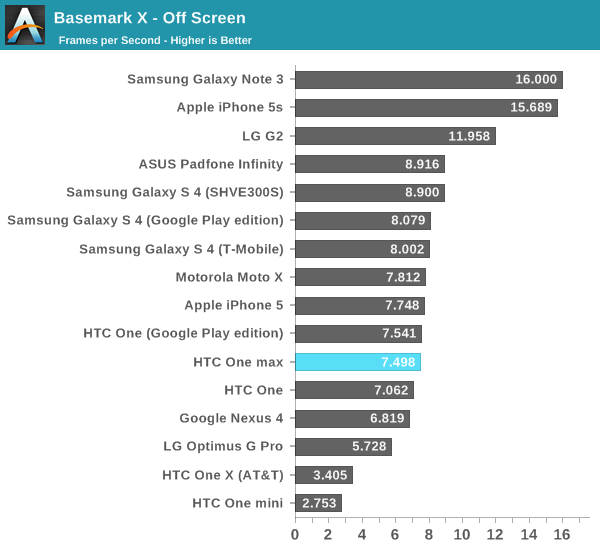
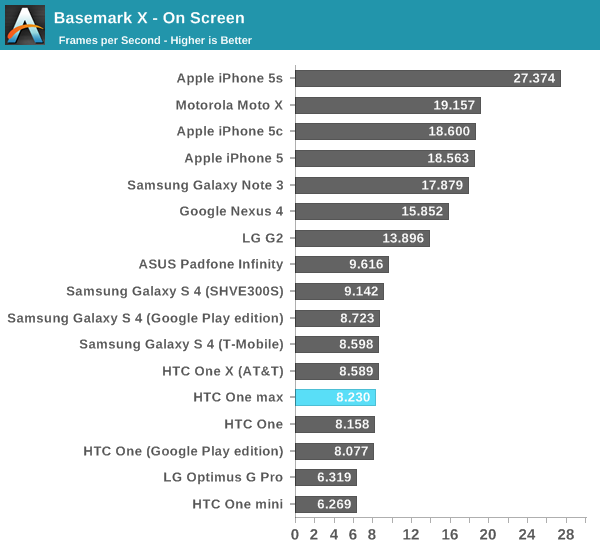
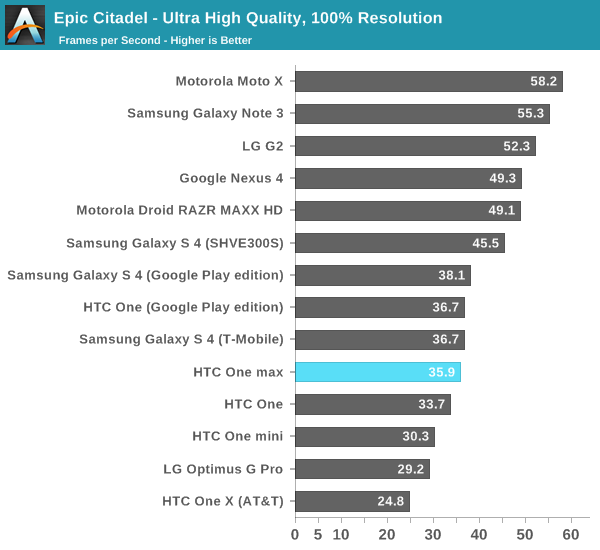
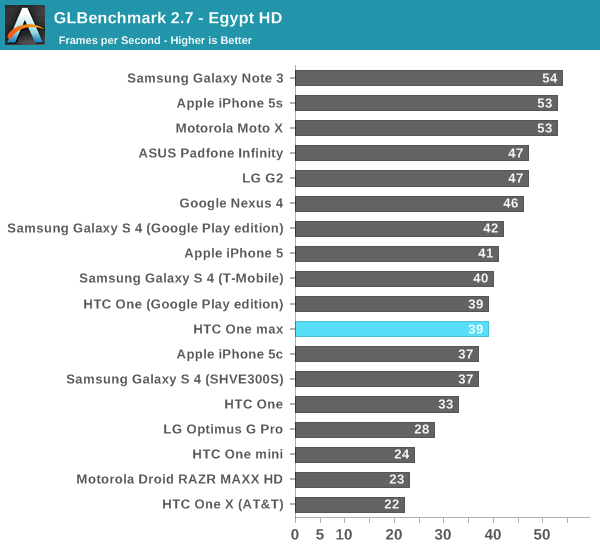
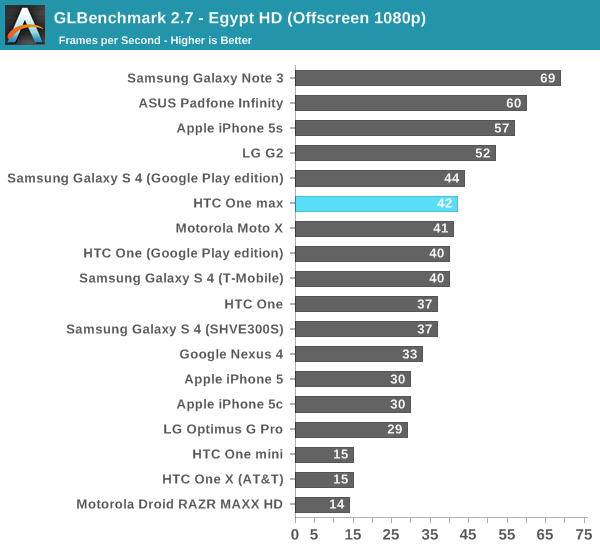
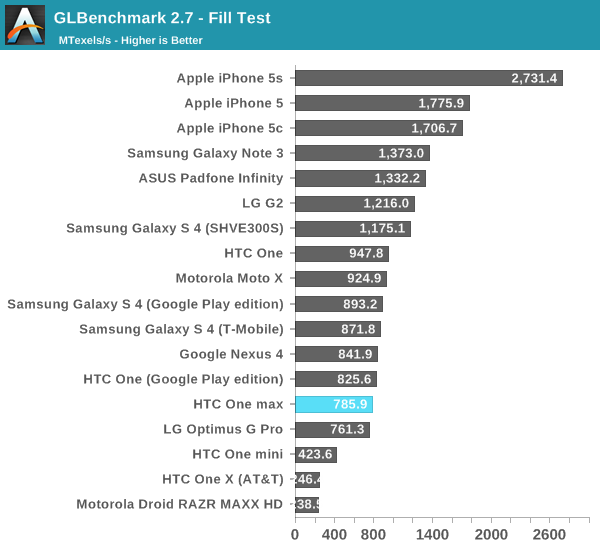

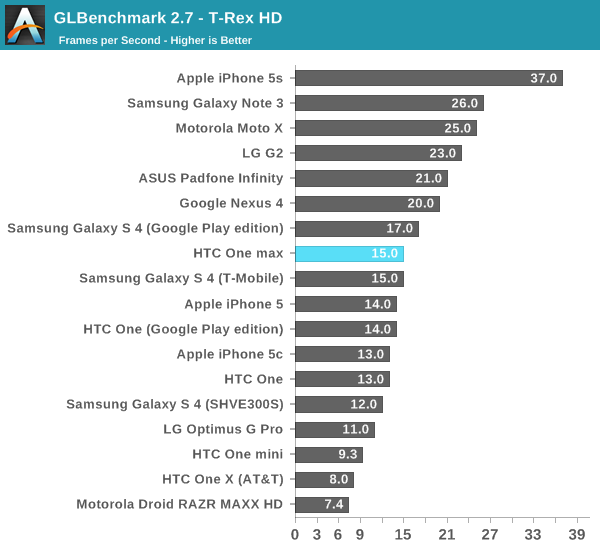
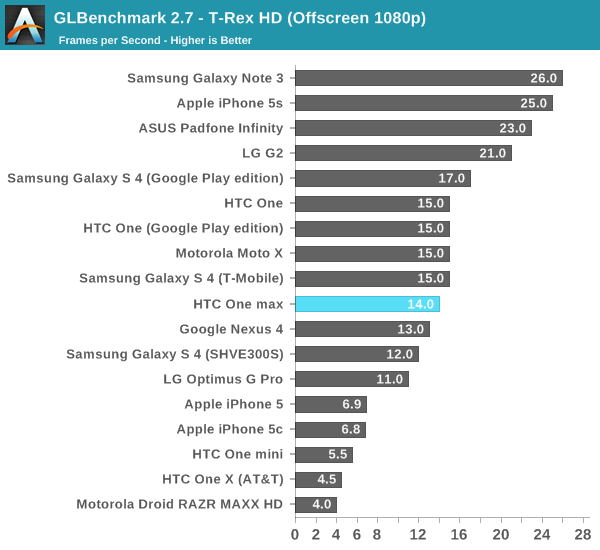
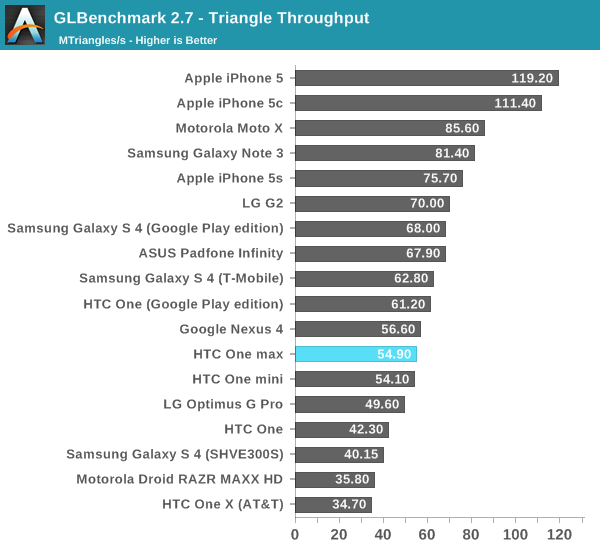
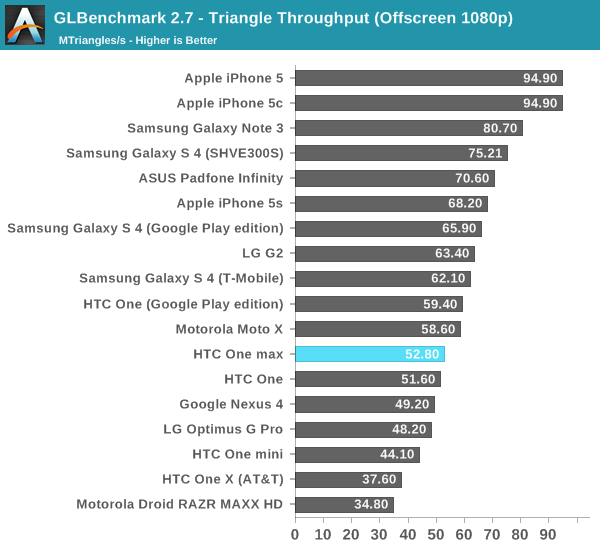
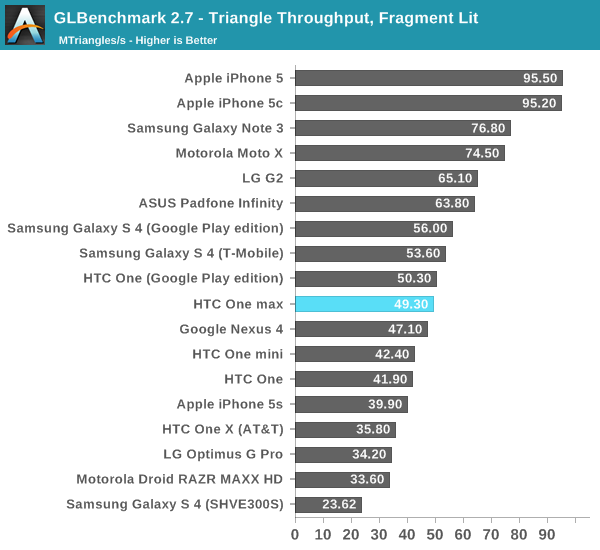
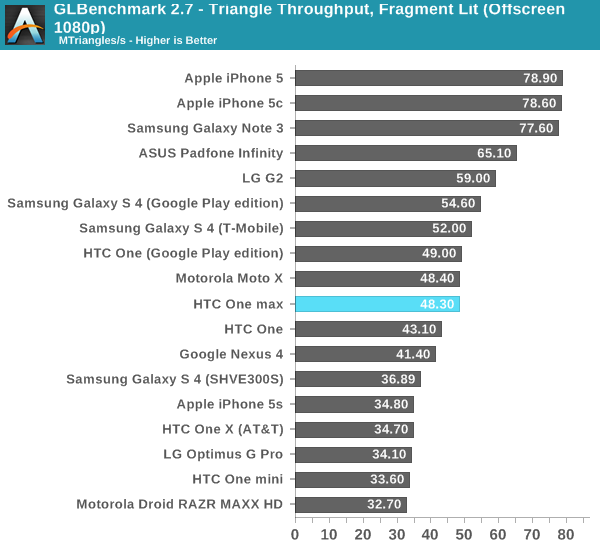
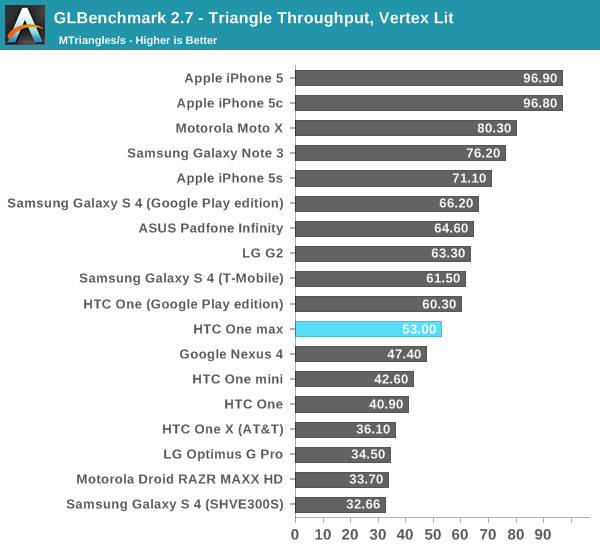
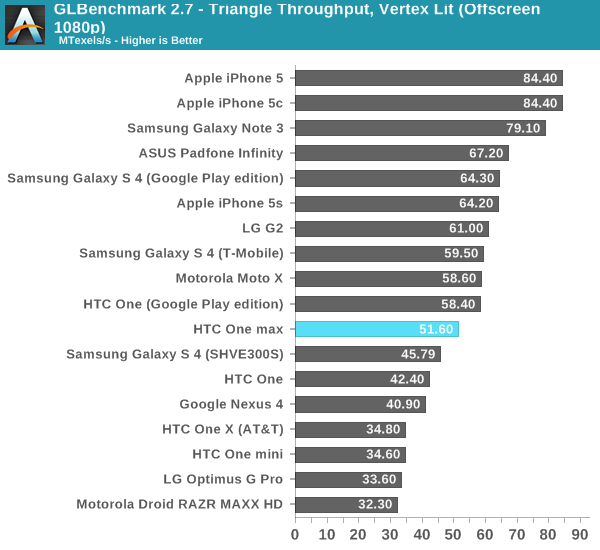
Storage
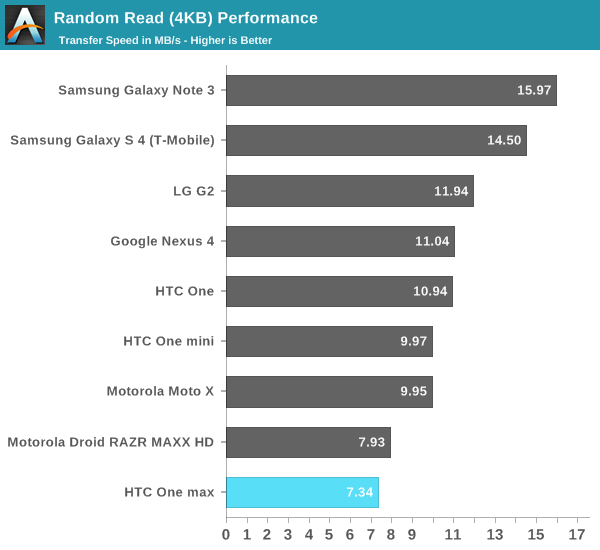
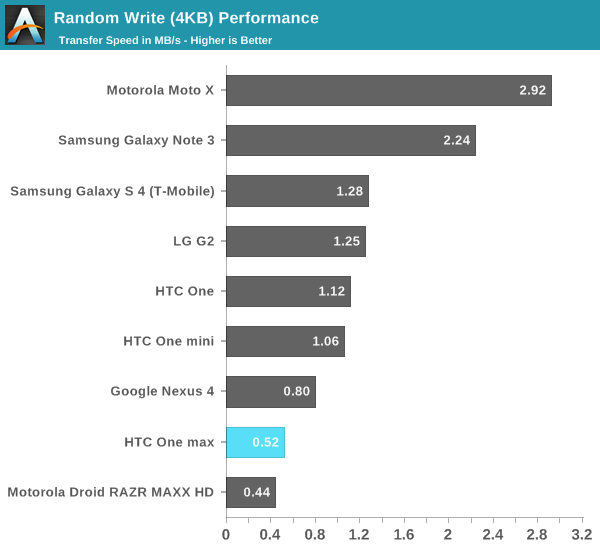
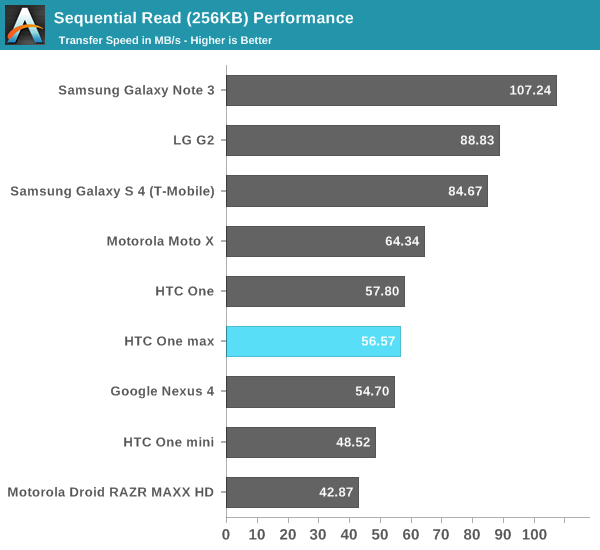
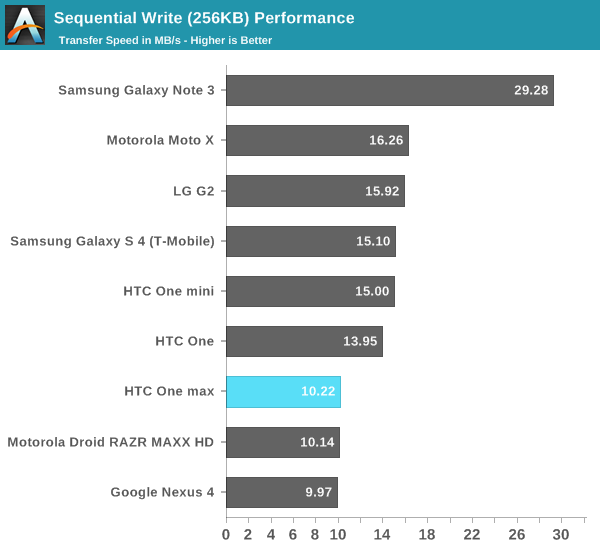
I’m not going to go through all the benchmark results on the One max since again it’s the 1.7 GHz Snapdragon 600 SoC we’re very familiar with at this point. The only oddity is storage performance, where the One max trails in random writes and reads, I'd attribute this to a different eMMC being used. The rest of the results are essentially within the margin of error. I initially suspected that the One max might have a bit more thermal headroom than the One, but this doesn't really seem to play itself out in the results, possibly due to the removable back door.


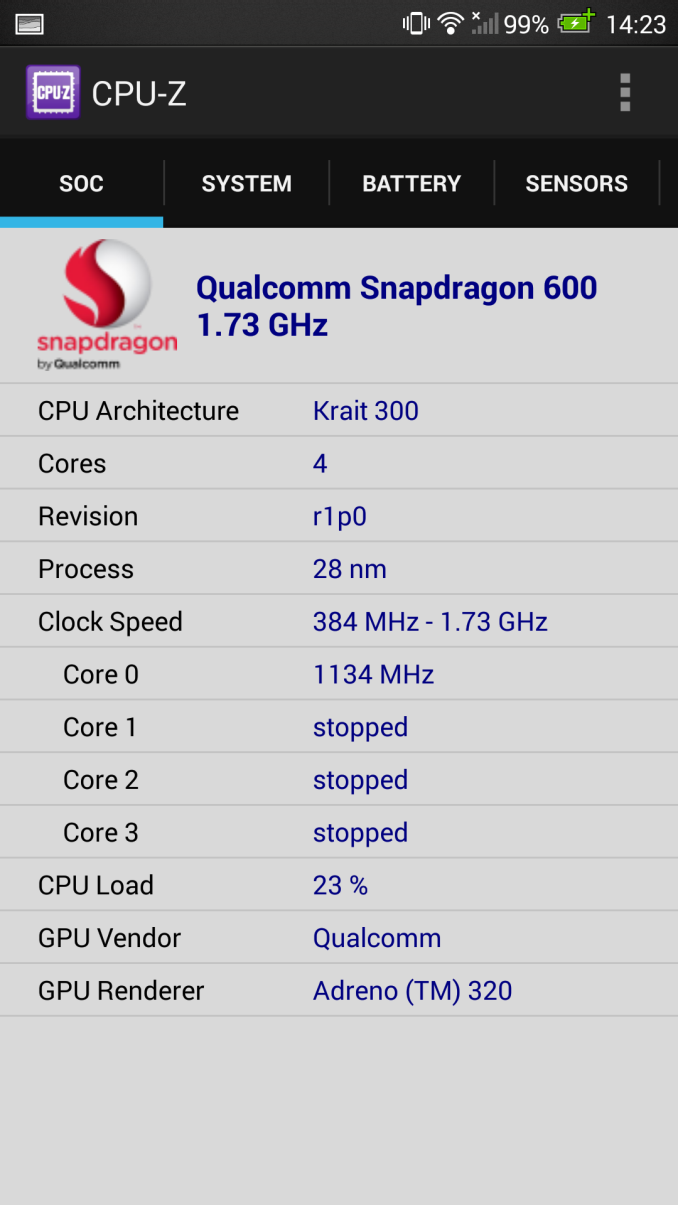
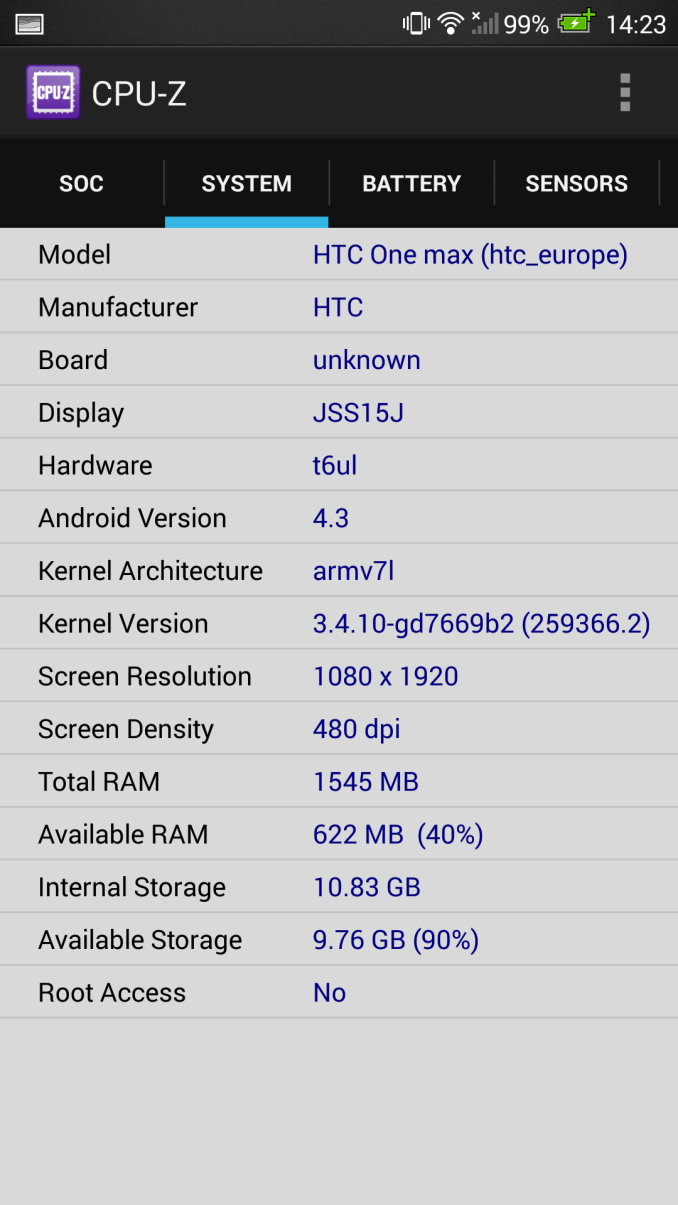








197 Comments
View All Comments
superflex - Tuesday, October 29, 2013 - link
If a 64 GB uSD card makes you happy, you might have problems.PC Perv - Tuesday, October 29, 2013 - link
Biggest logical fallacy is to claim that there is no need for affordable storage options in smartphones when the OEMs are charging $100, $200, $300 extra per those extra storages, and apparently the reviewer doesn't see the irony of it. If no one needs more than 16 GB, how do the OEMs get away with such ridiculous markups?The reviewer is happy as clam as long as she gets a new phone every other week.
chizow - Tuesday, October 29, 2013 - link
Yes, they're going away, slowly but surely, except they're not and in this case a device-maker that didn't include SD slots before added it to their latest flagship phone? How can you claim logical fallacy and not realize the inaccuracy of what you just wrote? Do you think next year's HTC One update will include an SD slot or no?As for the rest, it doesn't matter what the majority of disinterested users want, like any industry, the demand of the top-end drives demand and innovation for the rest. Just as most people may not care for a microSD slot, removable battery, or unibody aluminum chassis, they will ALMOST CERTAINLY take the advice over which phone to pick based upon the input from someone who DOES care about those features, or has the phone and decides on it based on word of mouth or first hand exposure.
bairlangga - Monday, October 28, 2013 - link
Dear Anand(Tech),No love for Xperias? Saw every brand are accounted for here, except Sony ;-)
superflex - Tuesday, October 29, 2013 - link
Because Sony want proved a demo sample. Blame your shitty manufacturer for that one, SparkyMercuryStar - Monday, October 28, 2013 - link
You have the HTC One Mini listed as a quad core Krait 200. Isn't it actually a dual core, and isn't it actually Krait 300, being that it's MSM8930aa?MercuryStar - Monday, October 28, 2013 - link
You're not the first person to claim the One Mini has a plastic speaker grille, but to me seeing it in person it is clearly metal, albeit with one of those clear plastic coatings like aluminum food tins usually have on the inside to protect the food. What's the deal - what makes you claim it's plastic? I agree it doesn't look great like on the One, but it quite clearly is metal albeit with a lower grade finish.AbbyYen - Monday, October 28, 2013 - link
For god shake, put snappy dragoony 800 in it already. And please, anything lower then 8MP is budget phone category. ultra pixel is useless. try capture a document and Ye shall know the difference. speaker at the front are welcome thou.fixxxer0 - Monday, October 28, 2013 - link
am I the only one laughed out loud at the speakerphone volume graph.... (beats off)Laststop311 - Monday, October 28, 2013 - link
Would of made much more sense to go with the SD 800. SD 400 on mini SD 600 on One and SD 800 on max. The SD 800 actually has better battery life due to LTE integration and it's faster. I can't bring myself to buy an outdated SoC when phones are already outdated so fast. Buying anything less than a SD 800 is a foolish move.I was really pumped about the max. But the SD 600 ruined it for me. I've been let down constantly. Was pumped for the lumia 1520 but of course t-mobile isn't getting it. I was pumped for the note 3 but it was barely an upgrade from the note 2. There is nothing good enough to make me want to add 23 dollars a month to my bill to subsidize a phone when my G note 2 is fully paid off and I get pure unlimited everything for 69.99 with LTE activated in my area. Looks like my note 2 will be my trusty side kick another year. Hope the note 4 brings something great to the table.